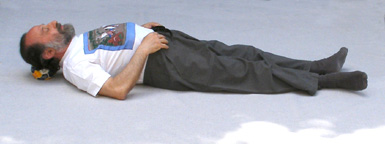
Fig. 1. Centered Position of Head on Ball
©Copyright 2009 by Robert Chuckrow
Relieving a Stiff Neck Using Kinetic Awareness® Principles
Elaine Summers, with whom I have studied Kinetic Awareness® (KA), taught me an extremely effective way of relieving tension in the neck. It is also very simple and meditative. KA emphasizes relying on oneself as much as possible and getting to the root of a problem by doing simple movements very slowly and mindfully. Doing so enables you to discover pockets of tension which can be relieved by (a) your expectation that that tension will dissolve and (b) passive, relaxed, slow, meditative movement. KA movement is often done while lying on the floor, where not having to deal with gravity and balance enables you to relax as much as possible and to release your preconceptions about how your body should move.
For the following exercise, you will need an area of wood or carpeted floor large enough to lie on and an air-filled rubber or plastic ball about 3–4 inches in diameter. So much the better if the ball is somewhat dead. Lie down on your back (you can lie on an exercise mat if you want), and place the ball under the back of your head in such a manner that the center of your head is directly over the center of the ball and your head is centered (turned neither to the right or left) relative to you body (see Fig. 1).

Fig. 1. Centered Position of Head on Ball
Lie still for a while with your head resting on the ball, surrendering to gravity and releasing as much tension as possible everywhere in your body. It may take quite some time to begin to discover tension, some of which is so habitual that it can persist unrecognized for long periods of time—hours, days, weeks, months, and even years. Such tension is difficult to release without movement. Doing extremely slow movement—so slow enough that you can encompass the muscular action in your awareness—the muscles that are in a state of excess tension can relax. At the same time, blood can transport waste products out of the affected cells and transport oxygen and nutrients into them. The slow, relaxed movement also conduces to enhancing the flow of ch’i.
Once you have achieved a sufficient state of relaxation, start to turn your head to the side extremely slowly and continuously, relaxing every muscle in your body as much as possible as you move. The movement should be done so slowly and continuously that only an adept observer will be able to detect any motion. Important: If you experience any pain during the movement, do not push through the pain. Instead, take time to work on relaxing the muscles involved so that you can move through painlessly. As you turn your head, there will be a tendency for it to roll off the ball. Therefore you must either keep the center of your head directly over that of the ball as you turn, or you will need to reposition the ball using your hands, which is okay as long as repositioning is not done so frequently that it pulls you out of what will be a semi-meditative state. When your head reaches the end of its natural motion (Fig. 2.), dwell in that position for a while, continuing to release as much tension as possible. Then, in the same relaxed, slow, and continuous manner, move back to center, and rest for a while. Then repeat going back and forth in the other direction.

Fig. 2. Turned Position of Head on Ball
When you are finished, you can rest with your head on the ball.
Caution: If you want to drift to sleep or maintain a meditative state, remove the ball and let your head rest on the floor or on a pillow. Otherwise, there is a danger that, as you fall asleep, your head may roll off the ball and hit the floor. Also, keep in mind that it is cooler on the floor than higher up, so you may want a blanket to cover your body.
When you get up, do so by first rolling onto your side. Then slowly come to sitting or standing, using your arms to lift you rather than unneccessarily tensing the muscles around the spine, which you have just worked on relaxing.
Alternatively, you can do the above motions with the ball under the back of your neck instead of under the back of your head.